How to Make Delicious Italian Treats at Home
If you’re looking for a cookie that’s both elegant and delicious, then you can’t go wrong with Florentines cookies. These thin, crispy cookies are made with a mixture of almonds, sugar, and butter, and are often drizzled with chocolate for an extra touch of decadence. While they may look difficult to make, the truth is that Florentines cookies are surprisingly easy to prepare, and can be customized to suit your tastes.

To start, you’ll need to gather your ingredients. Most Florentines cookies recipes call for sliced or slivered almonds, sugar, butter, flour, and cream. Some recipes may also call for corn syrup or honey, which help to keep the cookies moist and chewy. Once you have your ingredients ready, you’ll need to mix them together in a saucepan, and cook them over low heat until the mixture is smooth and glossy.
Next, you’ll need to spoon the mixture onto a baking sheet, and bake the cookies until they’re golden brown and crispy. Once the cookies are done, you can drizzle them with melted chocolate, or sandwich two cookies together with a layer of chocolate in between. With their delicate texture and rich, nutty flavor, Florentines cookies are the perfect treat for any occasion.
History of Florentines Cookies
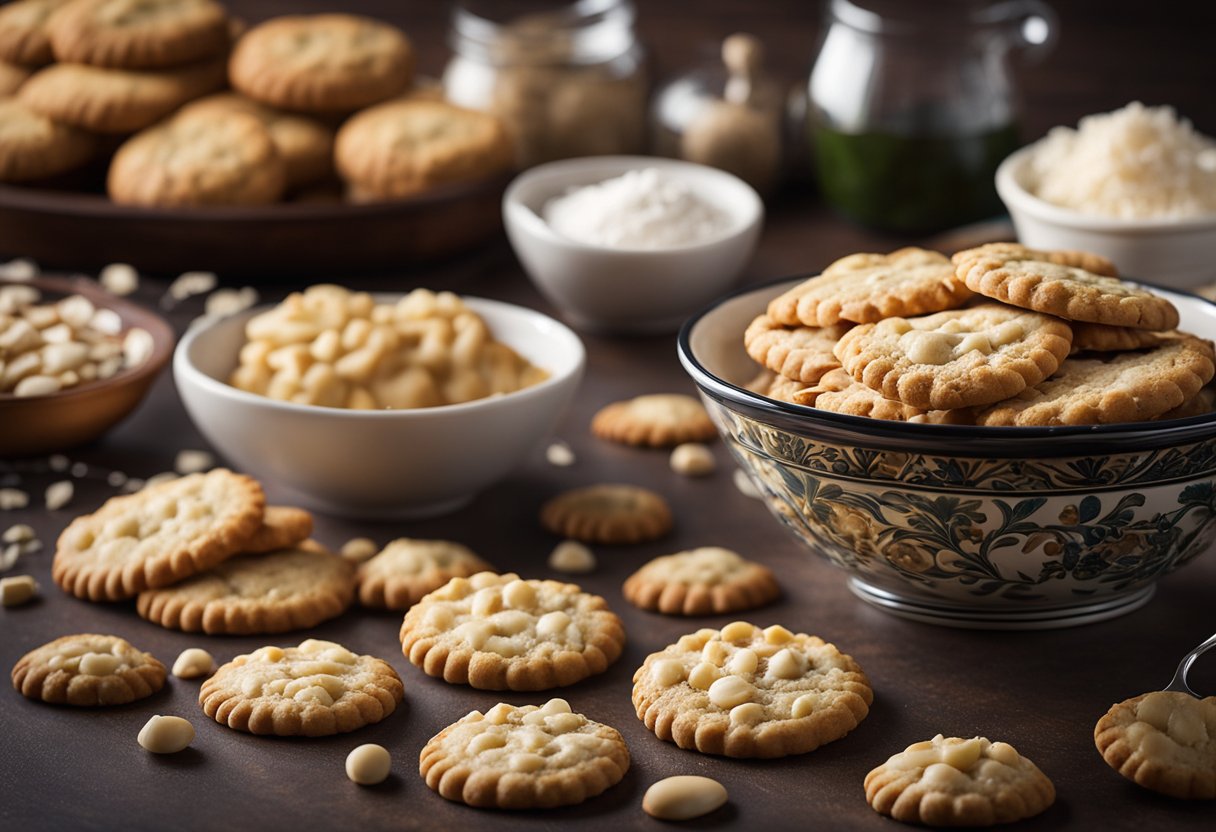
Origins
Florentines cookies are a traditional cookie that has been enjoyed for centuries. The exact origin of Florentines is not clear, but it is believed that they were created in the late 17th century in France. According to TasteAtlas, these cookies were most likely invented in the French royal kitchens in honor of their Tuscan in-laws. The cookies were then brought to Florence, Italy, where they became popular and were named after the city.
Florentines are made with a combination of nuts (most commonly almonds and hazelnuts), sugar, candied cherries, honey, and butter. The mixture is then baked until the edges are golden brown and the center is crispy. The result is a thin, delicate cookie that is both sweet and nutty.
Evolution Over Time
Over time, the recipe for Florentines has evolved and changed. Today, there are many different variations of the classic cookie. Some recipes call for the addition of chocolate, while others use different types of nuts or dried fruits.
Despite the changes in the recipe, the popularity of Florentines has remained constant. These cookies are still enjoyed around the world and are a staple in many households during the holiday season.
If you are looking to try your hand at making Florentines, there are many recipes available online. The Spruce Eats has a great recipe that is easy to follow and produces delicious results. Remember to use high-quality ingredients and to follow the recipe carefully for the best results.
Ingredients for Florentines Cookies
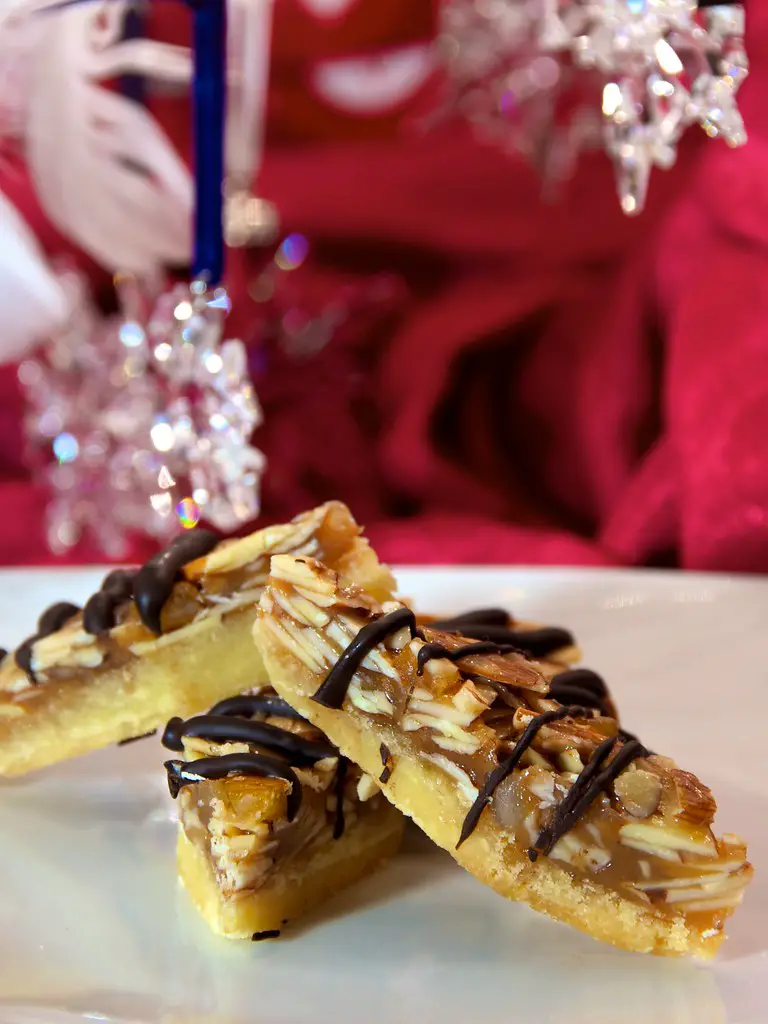
If you want to make the perfect Florentine cookies, it all starts with the right ingredients. Here are the key ingredients you’ll need to make a delicious batch of Florentine cookies.
Choosing Quality Ingredients
When choosing the ingredients for your Florentine cookies, it’s important to look for quality ingredients. For example, when selecting almonds, look for whole, raw almonds that are fresh and free of any rancid smell. You can also use sliced or chopped almonds, but make sure they are not stale.
Another key ingredient for Florentine cookies is butter. Choose unsalted butter for this recipe, as it allows you to control the amount of salt in your cookies. Make sure the butter is at room temperature so that it can be easily mixed with the other ingredients.
Alternative Ingredients
If you want to add a twist to your Florentine cookies, you can experiment with alternative ingredients. For example, instead of almonds, you can use other nuts such as hazelnuts, pistachios, or pecans. You can also add other ingredients such as dried fruits, chocolate chips, or coconut flakes.
If you’re looking for a healthier alternative, you can use honey or maple syrup instead of corn syrup. You can also use coconut oil instead of butter for a vegan option.
Here’s a list of ingredients you’ll need to make a classic Florentine cookies recipe:
- 1 cup whole, raw almonds
- 1/2 cup unsalted butter, at room temperature
- 1/2 cup granulated sugar
- 1/2 cup corn syrup
- 1/2 cup all-purpose flour
- 1/4 cup heavy cream
- 1 teaspoon vanilla extract
- Pinch of salt
By using high-quality ingredients and experimenting with alternative ones, you can create a unique and delicious batch of Florentine cookies that will delight your taste buds.
Preparing the Dough
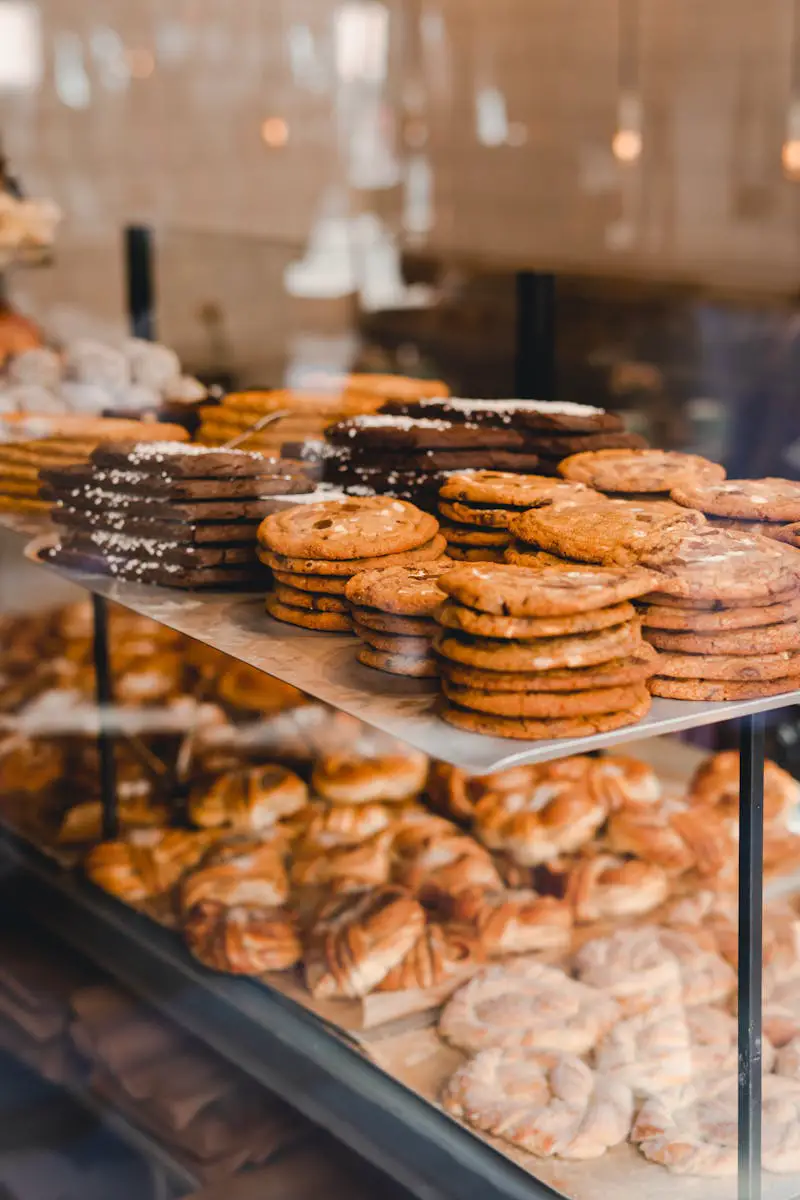
To make delicious Florentine cookies, you need to begin by preparing the dough. This process involves a few key steps, including mixing the ingredients together and allowing the dough to rest before baking.
Mixing Techniques
The first step in preparing the dough is to mix the ingredients together. The ingredients typically include finely chopped nuts, flour, sugar, butter, honey, and cream. You can use a stand mixer or hand mixer to mix the ingredients together until they form a cohesive dough.
Alternatively, you can mix the ingredients together by hand. To do this, start by combining the dry ingredients in a large mixing bowl. Add the wet ingredients, and use a wooden spoon or spatula to mix everything together until it forms a dough.
Resting the Dough
After you have mixed the ingredients together, it is important to let the dough rest for a period of time. This allows the flavors to meld together and the dough to become more pliable. You can either refrigerate the dough for a few hours or let it rest at room temperature for about an hour.
Once the dough has rested, you can begin shaping it into cookies and baking them. By following these simple steps for preparing the dough, you can create delicious and beautiful Florentine cookies that are sure to impress your friends and family.
Baking Techniques

When it comes to baking Florentine cookies, there are a few key techniques that you need to keep in mind to ensure that your cookies turn out perfectly every time. Here are some tips to help you get the best results:
Oven Settings
First and foremost, it is important to make sure that your oven is set to the correct temperature. Preheat your oven to 350°F (175°C) and make sure that it has reached the correct temperature before you begin baking. If your oven is too hot, your cookies may burn, and if it is too cool, they may not cook evenly.
Timing for Perfection
Timing is also crucial when it comes to baking Florentine cookies. The cookies should be baked for approximately 10-12 minutes, or until they are golden brown around the edges. Keep a close eye on them towards the end of the baking time to make sure that they don’t overcook.
Another important thing to keep in mind is that the cookies will continue to cook slightly once they are removed from the oven, so it’s important to take them out of the oven at the right time. Allow the cookies to cool on the baking sheet for a few minutes before transferring them to a wire rack to cool completely.
By following these simple baking techniques, you can create delicious and perfectly baked Florentine cookies every time.
Decorating Florentines Cookies
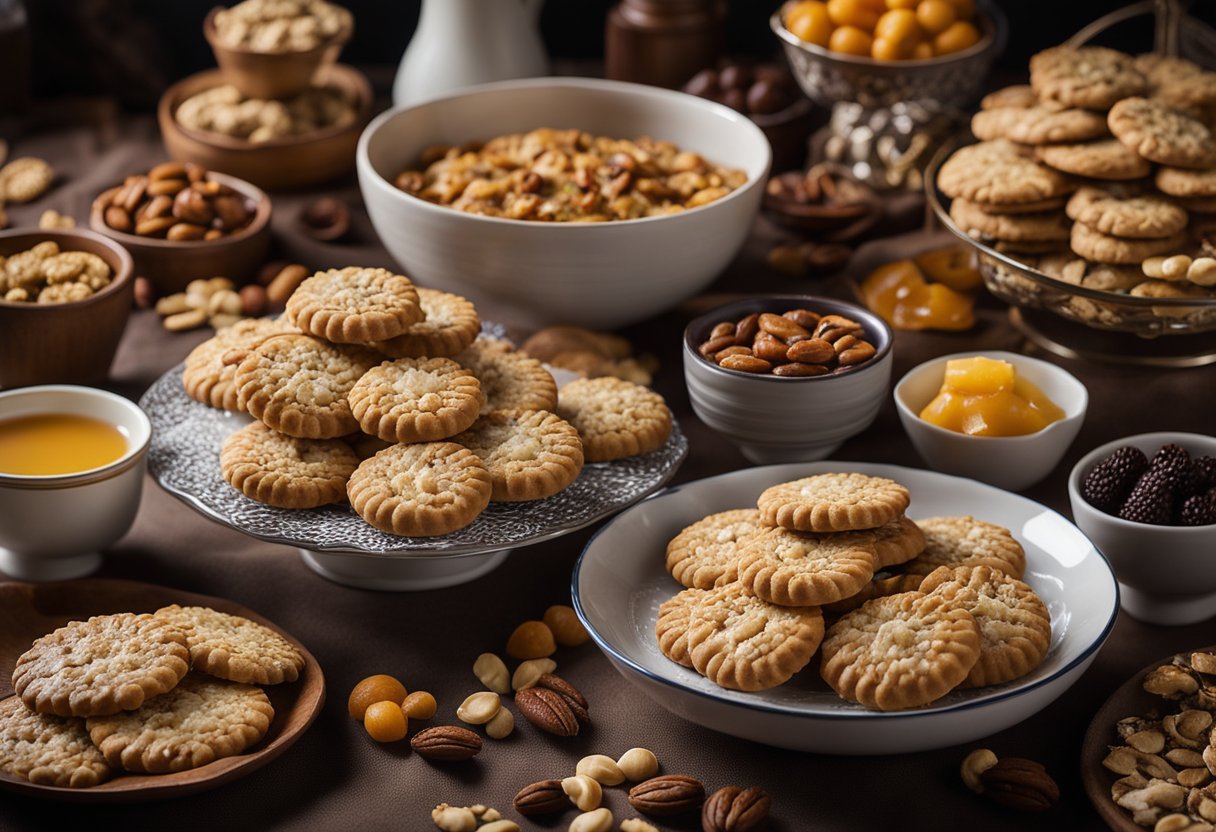
Once your Florentine cookies have cooled, you can decorate them to make them look even more delicious. Here are two easy ways to decorate your cookies.
Chocolate Coating
One of the most popular ways to decorate Florentine cookies is by coating them in chocolate. To do this, melt some chocolate in a double boiler or in the microwave. Once the chocolate is melted, dip each cookie into the chocolate and place it on a sheet of parchment paper to cool. You can also drizzle the chocolate over the cookies with a spoon or a piping bag.
Adding Nuts and Fruits
Another way to decorate your Florentine cookies is by adding nuts and fruits. You can use the same nuts and fruits that you used in the cookie batter, or you can use different ones. To do this, melt some honey in a saucepan and mix in the nuts and fruits. Then, spoon the mixture onto the cookies and let it cool.
You can also add a sprinkle of powdered sugar or cocoa powder to your cookies for an extra touch of sweetness. Whatever you choose to do, your Florentine cookies are sure to look and taste amazing!
Storing Florentines Cookies
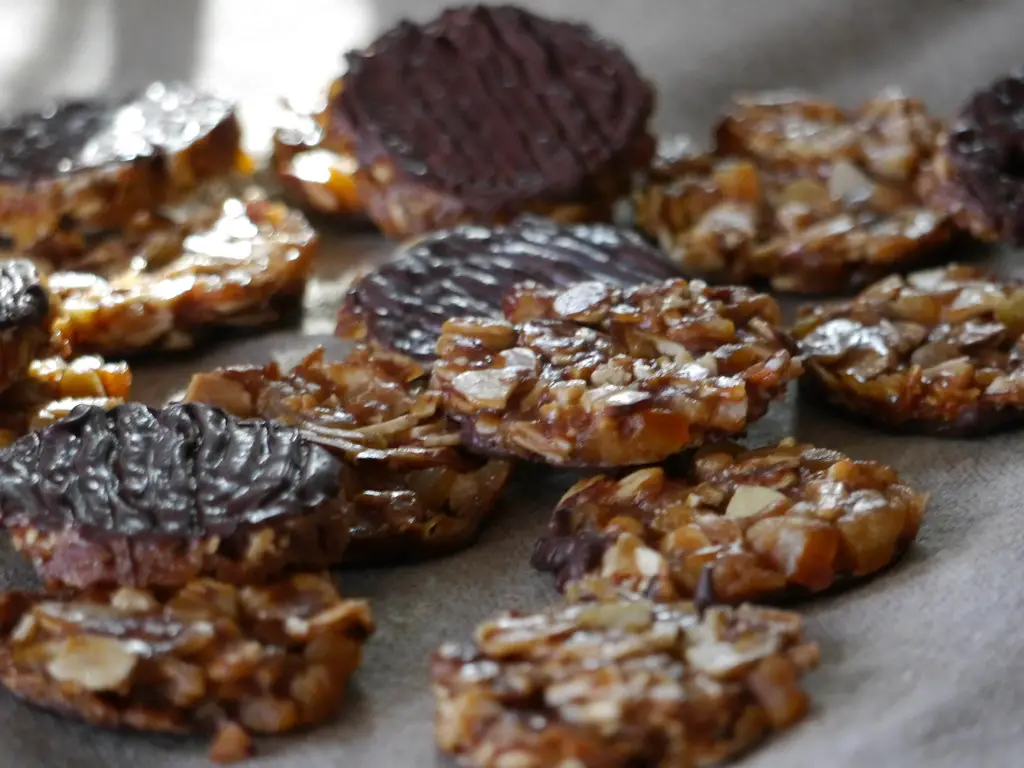
Once you’ve made a batch of delicious Florentines cookies, you’ll want to store them properly to ensure they stay fresh and tasty. Here are some tips for short-term and long-term storage.
Short-Term Storage
If you plan on eating your Florentines cookies within a few days, you can store them at room temperature in an airtight container. Be sure to layer the cookies with parchment paper to prevent them from sticking together.
Long-Term Storage
If you want to store your Florentines cookies for a longer period, you can freeze them. First, allow the cookies to cool completely. Then, place them in an airtight container or freezer bag and store them in the freezer for up to three months.
When you’re ready to eat the cookies, simply remove them from the freezer and let them thaw at room temperature for a few hours. Alternatively, you can heat them up in the oven at a low temperature for a few minutes to restore their crispiness.
Remember, the key to storing Florentines cookies is to keep them in an airtight container to prevent them from becoming stale or absorbing moisture. With proper storage, your Florentines cookies will stay fresh and delicious for days or even weeks.
Serving Suggestions

Once you have baked your delicious Florentine cookies, it’s time to serve them up in style. Here are some serving suggestions to make sure your guests are impressed:
Pairing with Drinks
Florentine cookies are a versatile treat that can be paired with a variety of drinks. One classic pairing is with a cup of tea or coffee. The sweetness of the cookies complements the bitterness of the coffee or tea, making for a perfect balance of flavors.
For a more indulgent experience, pair your Florentine cookies with a glass of dessert wine. The sweetness of the cookies will be enhanced by the wine, creating a decadent treat that is perfect for special occasions.
Presentation Tips
Presentation is key when serving Florentine cookies. Here are some tips to make sure your cookies look as good as they taste:
- Arrange the cookies on a decorative plate or platter, and sprinkle with powdered sugar for an extra touch of elegance.
- Serve the cookies alongside fresh berries or other fruit for a pop of color and added flavor.
- For a more rustic presentation, serve the cookies on a wooden board with a small jar of honey or jam for dipping.
No matter how you choose to serve your Florentine cookies, be sure to enjoy them with friends and family. They’re the perfect treat for any occasion!
Nutritional Information
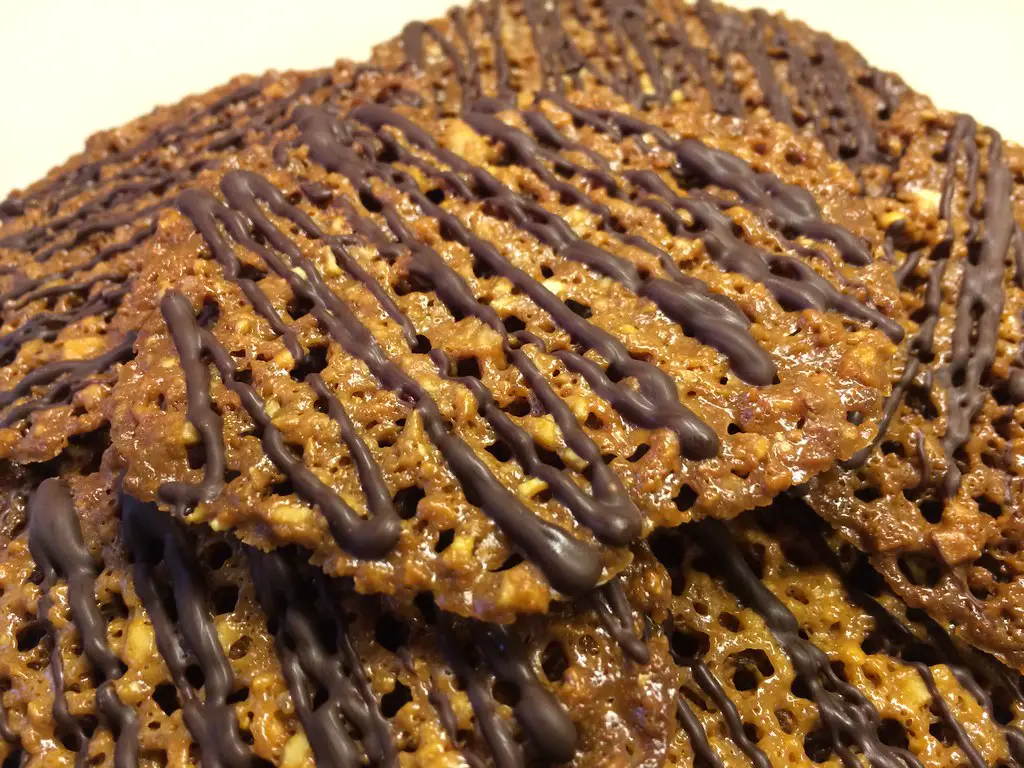
If you are watching your calorie intake, you might be wondering about the nutritional value of Florentine cookies. While they are delicious, they are also high in calories and sugar.
One serving of Florentine cookies (one cookie) contains approximately 90-100 calories. This may vary depending on the size of the cookie and the recipe used. The cookies are also high in sugar, typically containing around 7-9 grams per cookie.
Florentine cookies are also high in fat, with most recipes calling for butter or heavy cream. However, they also contain healthy fats from the almonds used in the recipe. One serving of Florentine cookies contains approximately 6-7 grams of fat.
If you are looking for a healthier option, you can try making Florentine cookies with alternative sweeteners like honey or maple syrup. You can also substitute some of the butter with coconut oil or applesauce. However, keep in mind that these substitutions may affect the texture and flavor of the cookies.
Overall, Florentine cookies are a delicious treat that should be enjoyed in moderation. While they are high in calories and sugar, they also contain healthy fats and can be made with alternative sweeteners.
Customizing Florentines Cookies

Florentines cookies are a classic Italian dessert that can be customized to suit your dietary needs and preferences. Whether you are vegan or gluten-free, there are plenty of ways to enjoy these delicious cookies.
Vegan Variations
If you are vegan, you can still enjoy the rich and nutty flavor of Florentines cookies. Instead of using butter, you can use vegan butter or coconut oil. You can also substitute the honey with maple syrup or agave nectar. Use a flax egg instead of a regular egg to bind the ingredients together. You can also add vegan chocolate chips or dried fruit to the mix for a unique twist.
| Ingredient | Vegan Substitute |
|---|---|
| Butter | Vegan butter or coconut oil |
| Honey | Maple syrup or agave nectar |
| Egg | Flax egg |
Gluten-Free Options
If you are gluten intolerant or have celiac disease, you can still enjoy the delicious flavor of Florentines cookies. Instead of using wheat flour, you can use almond flour or gluten-free flour. You can also use gluten-free oats instead of regular oats. Make sure to read the labels of the ingredients to ensure that they are gluten-free.
| Ingredient | Gluten-Free Substitute |
|---|---|
| Flour | Almond flour or gluten-free flour |
| Oats | Gluten-free oats |
In conclusion, customizing Florentines cookies is easy and fun. With a few substitutions, you can make these delicious cookies to suit your dietary needs and preferences. Whether you are vegan or gluten-free, you can enjoy the rich and nutty flavor of these classic Italian cookies.
Troubleshooting Common Issues
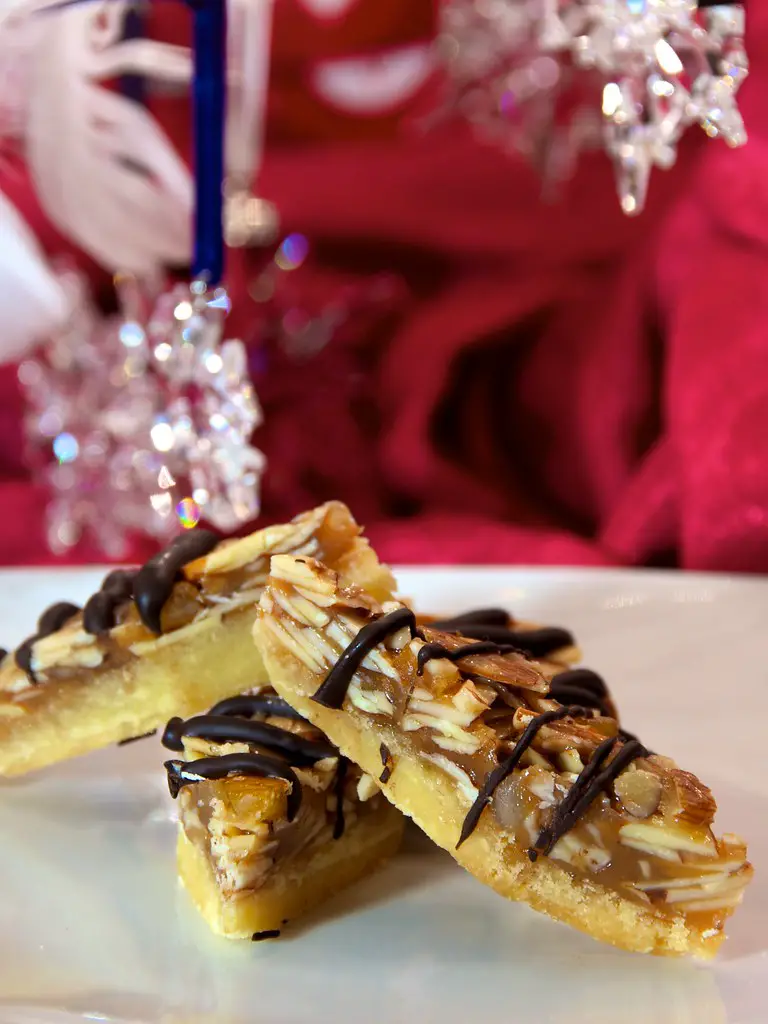
If you encounter any issues while making Florentine cookies, don’t worry, as there are solutions to most problems. In this section, we will discuss some common issues that may arise while making Florentine cookies and how to fix them.
Texture Problems
Cookies are too soft or chewy
If your cookies are too soft or chewy, it may be because you didn’t bake them long enough. Make sure to bake the cookies until they are golden brown. If you find that the cookies are still too soft, try baking them for an additional 1-2 minutes.
Cookies are too hard or crisp
If your cookies are too hard or crisp, it may be because you baked them for too long. Make sure to keep an eye on the cookies while they are in the oven and take them out as soon as they turn golden brown. If you find that the cookies are still too hard, try reducing the baking time by 1-2 minutes.
Shape and Size Discrepancies
Cookies are spreading too much
If your cookies are spreading too much, it may be because you didn’t chill the dough enough before baking. Make sure to chill the dough for at least 30 minutes before baking. If you find that the cookies are still spreading too much, try reducing the amount of butter in the recipe.
Cookies are not spreading enough
If your cookies are not spreading enough, it may be because you didn’t flatten the dough enough before baking. Make sure to flatten the dough balls slightly before placing them on the baking sheet. If you find that the cookies are still not spreading enough, try adding a little bit of milk or cream to the dough to make it more pliable.
By following these troubleshooting tips, you can ensure that your Florentine cookies turn out perfectly every time.
Florentines Cookies in Different Cultures

Florentine cookies are a classic Italian cookie that is known and loved worldwide. While the original recipe for Florentine cookies is Italian, there are many variations of it that exist in different cultures. Here are some of the most popular variations of Florentine cookies from around the world.
Italian Variations
In Italy, there are many different variations of Florentine cookies. Some of the most popular variations include adding hazelnuts, pine nuts, and pistachios to the recipe. These variations add a unique flavor and texture to the cookies. Additionally, some Italian recipes call for adding chocolate to the cookies, which makes them even more decadent.
Global Influences
Florentine cookies recipe have become popular all over the world, and as a result, many different cultures have put their own spin on the classic recipe. In France, for example, Florentine cookies are known as “florentins” and are often made with almonds and honey. United States, Florentine cookies recipe are often made with pecans and are sometimes dipped in chocolate.
India, Florentine cookies recipe are known as “biscotti di Prato” and are often made with cashews and cardamom. In China, Florentine cookies are known as “Phoenix cookies” and are often made with sesame seeds and honey.
Overall, Florentine cookies recipe are a delicious treat that can be enjoyed in many different cultures. Whether you prefer the classic Italian recipe or one of the many variations from around the world, Florentine cookies are sure to satisfy your sweet tooth.
Frequently Asked Questions

What are the main ingredients in Florentine cookies?
The main ingredients in Florentine cookies recipe are almonds, sugar, butter, heavy cream, and honey or corn syrup. Some recipes also include flour, candied fruits, or chocolate.
What is the difference between Florentine cookies and lace cookies?
Florentine cookies recipe and lace cookies are very similar, but Florentine cookies typically contain almonds and are often dipped in chocolate. Lace cookies are usually made with oats and are thinner and more delicate than Florentine cookies.
How can I prevent Florentines from spreading too much during baking?
To prevent Florentine cookies recipe from spreading too much during baking, make sure to space them out well on the baking sheet and use a silicone baking mat or parchment paper. You can also try chilling the dough before baking.
Why are they named ‘Florentines’ and what is their origin?
Florentine cookies are named after the Italian city of Florence, where they are believed to have originated. They are a traditional Italian Christmas cookie.
What is the traditional method for making Florentine cookies?
The traditional method for making Florentines cookies recipe involves melting sugar, butter, and cream together in a saucepan, then combining them with ground almonds and flour. The mixture is then dropped by spoonfuls onto a baking sheet and baked until golden brown.
How do Florentine cookies differ from other similar biscuit recipes?
Florentines cookies recipe are similar to other almond-based cookies, such as macaroons or amaretti, but they are usually thinner and crispier. They are also often dipped in chocolate, which sets them apart from other cookies.
External Links
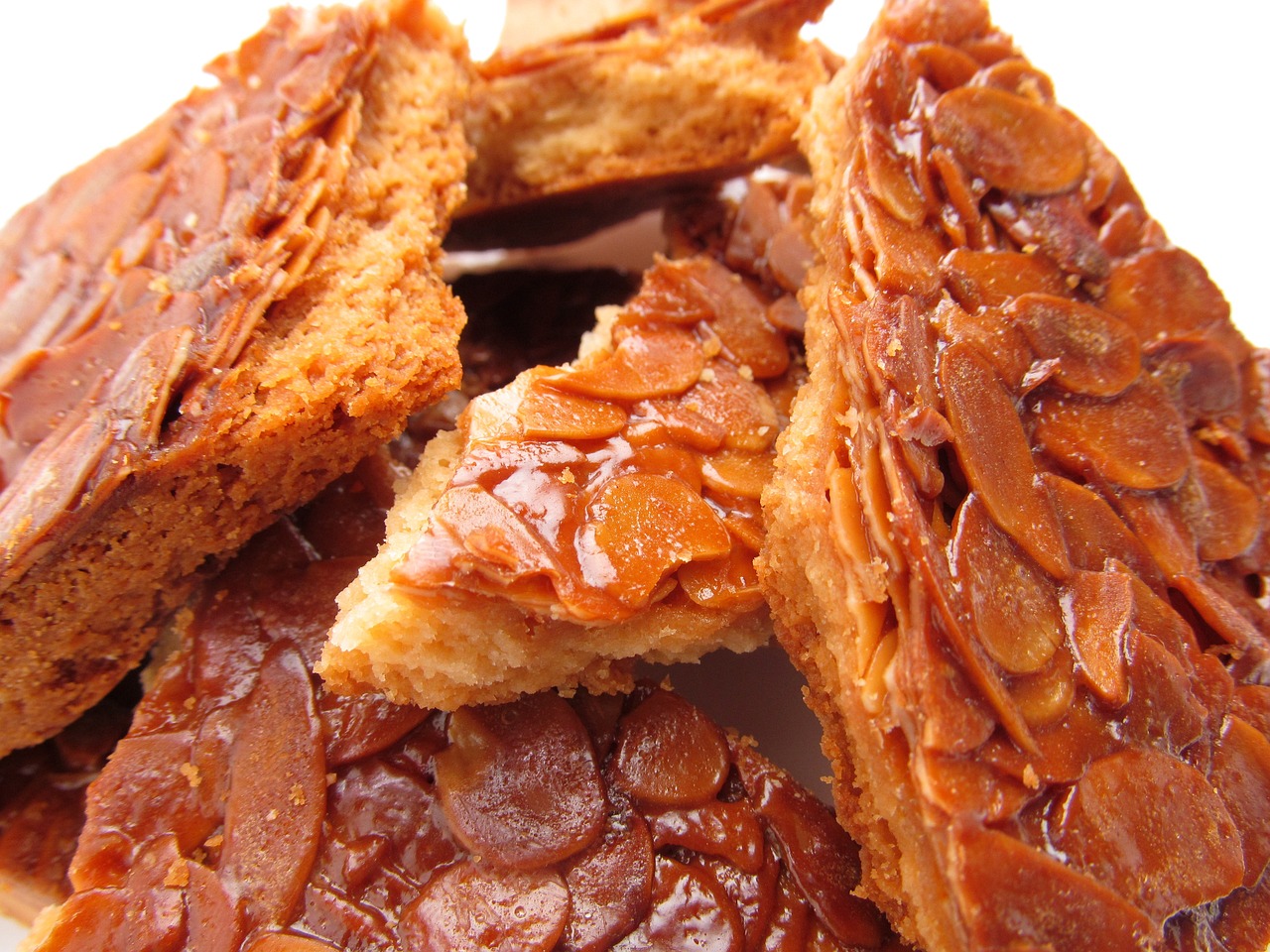
If you want to learn more about Florentines cookies recipe and explore different variations of the recipe, there are plenty of external resources available online. Here are a few links that you might find helpful:
- Giada De Laurentiis’ Florentines Recipe: This recipe from Food Network’s Giada De Laurentiis is a classic take on Florentine cookies recipe. It includes almond slices, orange zest, and dark chocolate for a delicious and decadent treat.
- Savor the Best’s Easy Florentine Cookies: If you’re looking for a simpler version of the recipe, this one from Savor the Best might be just what you need. It uses only a handful of ingredients and can be made in just a few steps.
- An Edible Mosaic’s Florentines Recipe: This recipe from An Edible Mosaic includes both almonds and pecans for a unique twist on the traditional Florentines cookies recipe. The author also provides tips for fixing common issues that can arise when making this delicate treat.
- Sugar Salt Magic’s Perfect Florentines Biscuits: This recipe from Sugar Salt Magic includes dried cherries and sultanas for a fruity twist on the classic Florentine cookies recipe. The author also provides step-by-step instructions with photos to help you make the perfect batch.
Each of these recipes offers its own take on the classic Florentines cookies recipe, so you can choose the one that best suits your taste preferences and skill level. Whether you’re a seasoned baker or a newbie in the kitchen, there’s a recipe out there that will help you create delicious and beautiful Florentines cookies.
More FAQs

What are Florentine cookies made of?
Florentines cookies recipe are made of a mixture of finely chopped nuts, sugar, butter, flour, and sometimes corn syrup. Almonds are the most commonly used nut, but pecans or hazelnuts can be used as well. The mixture is then baked until it becomes a thin, crispy cookie. Some variations of Florentine cookies also include dried fruit, such as cherries or raisins.
Why are my Florentines soft?
If your florentines cookies recipe are soft, it could be due to underbaking or not letting them cool completely before removing them from the baking sheet. To ensure that your Florentine cookies come out crispy, bake them until the edges are golden brown and the centers are a light golden color. Once they are done baking, let them cool completely on the baking sheet before removing them.
Can Florentine cookies be frozen?
Yes, florentines cookies recipe can be frozen. To freeze them, place the cookies in an airtight container or freezer bag and store them in the freezer for up to a month. When you’re ready to enjoy them, let them thaw at room temperature for a few hours before serving.
How long can you keep homemade Florentines?
Homemade florentines cookies recipe can be stored in an airtight container at room temperature for up to a week. If you want to extend their shelf life, you can store them in the refrigerator for up to two weeks or in the freezer for up to a month. Just make sure to let them come to room temperature before serving.
Conclusion
Congratulations! You have successfully made a batch of delicious Florentine cookies recipe. These crispy and chewy cookies are perfect for any occasion, and they are sure to impress your friends and family.
As you have learned, the key to making perfect Florentine cookies recipe is to be patient and precise. From measuring your ingredients accurately to keeping a close eye on your cookies as they bake, every step is important. Remember to use parchment paper or a silicone baking mat to prevent sticking, and be sure to let your cookies cool completely before removing them from the baking sheet.
With a little practice, you will become a pro at making Florentine cookies recipe. Try experimenting with different flavors and ingredients to create your own unique twist on this classic recipe. Whether you enjoy them plain or dipped in chocolate, these cookies are sure to become a staple in your baking repertoire.
So go ahead and treat yourself to a delicious batch of Florentine cookies recipe. You deserve it!
Print
florentines cookies recipe
- Total Time: 25 minutes
- Yield: 24 cookies 1x
- Diet: Vegetarian
Description
Florentine Cookies
Ingredients
- 1/2 cup unsalted butter
- 1/2 cup granulated sugar
- 1/3 cup all-purpose flour
- 1/4 cup heavy cream
- 1 1/2 cups sliced almonds
- 1/3 cup candied fruits, chopped
- 1/2 teaspoon vanilla extract
Instructions
- Preheat the oven to 350°F (175°C) and line a baking sheet with parchment paper.
- In a saucepan, melt the butter and sugar together. Stir in the flour and cream until smooth.
- Remove from heat and add the almonds, candied fruits, and vanilla extract.
- Drop teaspoonfuls of the mixture onto the prepared baking sheet, leaving space between each one.
- Flatten each mound with the back of a spoon.
- Bake for 8-10 minutes or until golden brown.
- Allow the cookies to cool on the baking sheet for a few minutes before transferring to a wire rack to cool completely.
Notes
These cookies are best enjoyed with a cup of coffee or tea.
- Prep Time: 15 minutes
- Cook Time: 10 minutes
- Category: Dessert
- Method: Baking
- Cuisine: American
Nutrition
- Serving Size: 1 cookie
- Calories: 120
- Sugar: 7g
- Sodium: 20mg
- Fat: 8g
- Carbohydrates: 10g
- Fiber: 1g
- Protein: 2g
- Cholesterol: 15mg
Keywords: Florentine Cookies Recipe
